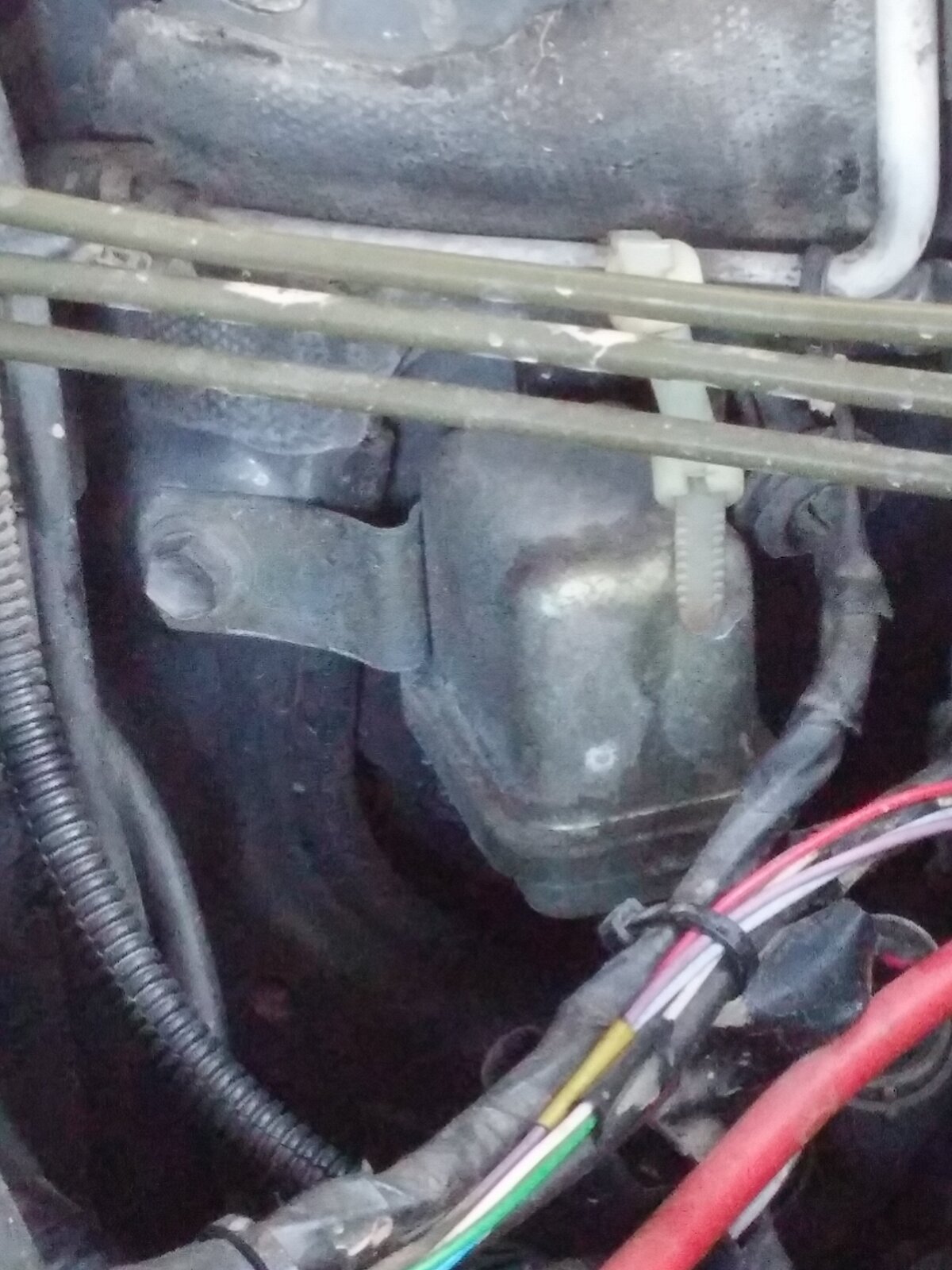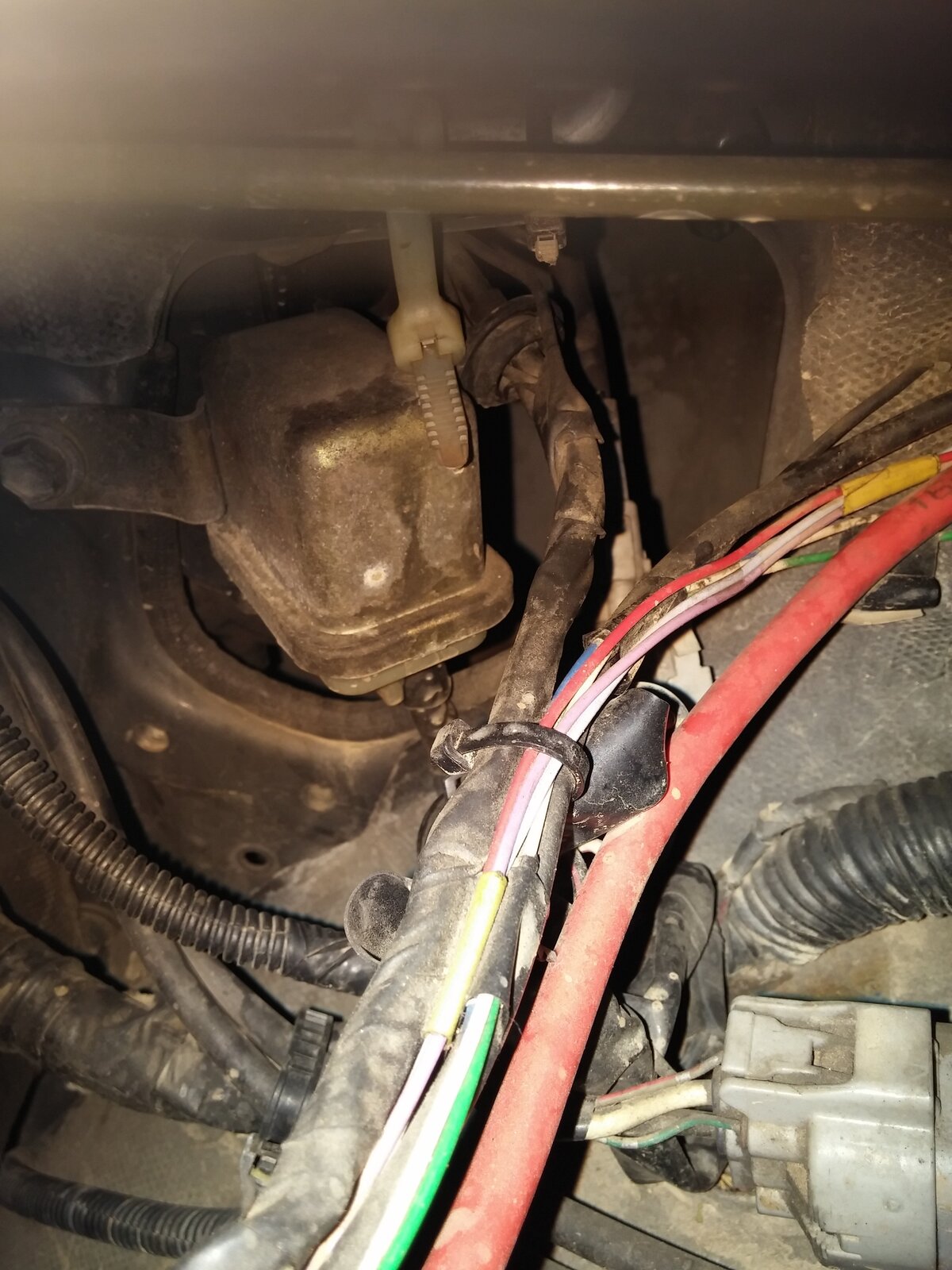To test if the 12/24v change over solenoid is working you can measure the voltage between the passenger side battery +ve terminal and the engine block. Before you turn the key it should be approximately 12v. When you turn the key to start and hold it in that position the voltage should rise to 24v plus. Remember to put the meter on a range that goes up to 30v if it isn't auto range. If it shows >= 24v the 12/24v solenoid is working.
The starter solenoid relay which is the relay Dave mentioned in the passenger side wing set into the hole you access the radio aerial through is a fairly chunky relay so you should be able to feel it clicking if it is working but you might not be able to hear it over the clonk of the change over solenoid. They do have drain holes in the bottom but they have been known to be mounted upside down so the drain holes become water inlets! You can take the can off the relay quite easily if you want a peek inside but I would check there is +12v and 0v across the terminals when you turn the key first. The +12v comes from the ignition switch, the 0v is switched by a relay module in the passenger side kick panel that will only connect it to 0v when it senses 24v at the 12/24v change over solenoid.
The starter solenoid relay which is the relay Dave mentioned in the passenger side wing set into the hole you access the radio aerial through is a fairly chunky relay so you should be able to feel it clicking if it is working but you might not be able to hear it over the clonk of the change over solenoid. They do have drain holes in the bottom but they have been known to be mounted upside down so the drain holes become water inlets! You can take the can off the relay quite easily if you want a peek inside but I would check there is +12v and 0v across the terminals when you turn the key first. The +12v comes from the ignition switch, the 0v is switched by a relay module in the passenger side kick panel that will only connect it to 0v when it senses 24v at the 12/24v change over solenoid.








